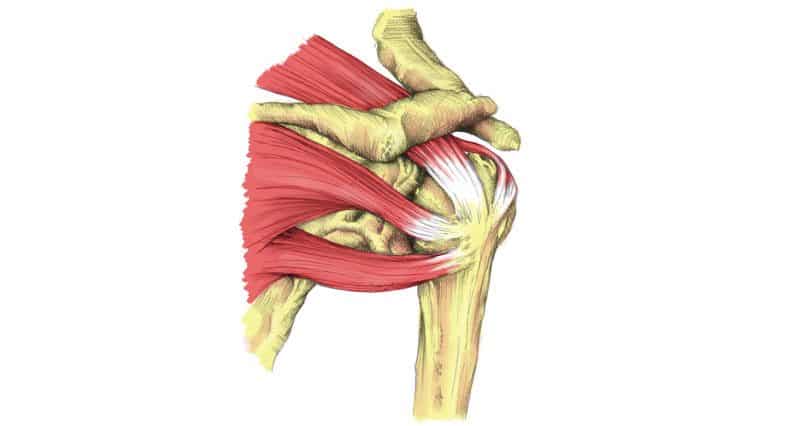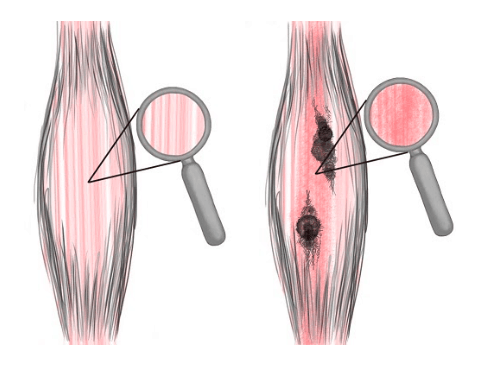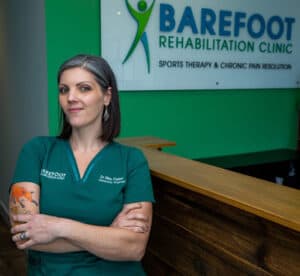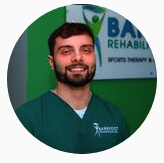
07 Apr What is the Rotator Cuff, and why can’t it heal on its own?
BY: Dr. Nina Foster, DC
If you want a healthy, pain-free, and fit shoulder, then a healthy rotator cuff is a must!
You may not have even considered it until now, but your rotator cuff is responsible for most of the motion of your shoulders, which you may be taking for granted.
Your ability to get a mug from a high shelf, wash your hair or play many sports like tennis, baseball or swimming all depends on the rotator cuff muscles.
THE SCIENCE OF THE ROTATOR CUFF
The rotator cuff is actually made up of four different muscles, which must all operate in a brilliant concert with one another in order for you to pick up that Starbucks to go order from the counter-top.
Check out the video below where I will explain by drawing the muscles of the rotator cuff.
So, now that you have a better understanding of the anatomy of our rotator cuff, let’s talk about what happens when there is injury to any one of these muscles, or their tendons.
Repetitive activities like:
- swimming
- throwing a ball
- working out the upper body
- every day tasks like: washing dishes, turning a wrench, or doing the laundry
… can all cause overuse injury to the rotator cuff.
An overuse injury is one that occurs over time when doing the same activity over and over again.
The repetition causes micro tearing in the muscle tissue and fascia surrounding it and can put strain on the tendons.
Often the body is capable of healing these micro injuries and moving on with you none the wiser. But what happens when pain starts to creep in every time you lift your arm up?
LOAD vs CAPACITY AND WHY YOU’RE IN PAIN!
Overloading your capacity results in pain and longer term injury.
Your rotator cuff capacity = the ability to do work, pain-free.
As soon as you over do your capacity, you’ll have injury AND PAIN!
If you’re younger and it’s a smaller injury, it’s probably just some inflammation in the rotator cuff and you’ll be out of pain in a jiffy.
But if your pain is more chronic and hasn’t gone away on it’s own, then there’s DEFINITELY a pathology preventing you from healing.
With so many different types of therapies out there, how do you know what’s best?
We all love a good massage right? Currently, though, there is no evidence to support the use of massage to treat a rotator cuff injury (1).
So, massage may not be the best, but what about other therapies?
You may have heard of people getting “injections” in their shoulders when they have shoulder pain. These injections are likely steroid injections, which are meant to reduce the pain and inflammation.
However, multiple studies show that steroid injections don’t improve rotator cuff injury outcomes, and in fact, if given after rotator cuff surgery can even lower positive outcomes and long lasting relief (2).
Several studies indicate temporary pain relief, but no sustained healing or relief (3) (4). Bottom line, steroid injections offer only temporary relief and can even make a rotator cuff injury worse.
WHEN NOTHING ELSE HAS WORKED
Now that you have decided that you want a permanent solution to your rotator cuff pain because a band-aid simply won’t do, let’s talk about the most common cause of rotator cuff injury that nobody is talking about: adhesion.
You may be thinking:
Doc Nina, how come this is the most common cause of rotator cuff injury, if nobody else is talking about it?
Simply, it doesn’t serve conventional medicine’s purpose of peddling drugs and surgery. There is no economic gain in permanent pain relief.
Adhesion is simply a glue like substance that forms in muscles, fascia, and around tendons/ligaments in response to chronic small, repetitive, overuse injuries, when some muscles have to work overtime because other muscles aren’t strong or stable enough to do their jobs, which causes overuse too, or from a large, one-time injury.

It can build up over time, and progressively get worse without treatment leading to things like frozen shoulder and muscle atrophy.
This glue like stuff, adhesion, acts like you might suspect; it glues down layers of muscle and fascia, and this causes a greater problem.
THE FACTS AND THE STORIES
Remember load vs. capacity?
As the adhesion builds up, you lose flexibility, and pain increases ultimately leading to full blown adhesive capsulitis (frozen shoulder…adhesion… are we there yet?), and eventually a blow out tear.
Notice in the model how the glue literally causes the adhesion model to NOT STRETCH as far as the healthy muscle model.
So …
What if you already have a torn rotator cuff?
I am glad you asked!
Hear what my patient Anthony has to say about cancelling his rotator cuff and labrum repair surgery after having his adhesions removed.
Still not convinced?
Check out this testimonial from a Doctor whose career was saved by our adhesion removal techniques.
My patients were considering surgery to fix their chronic shoulder and arm pain, but after benefiting adhesion removal not only did Anthony cancel his surgery, but Dr. Rich Tom claims that we saved his career as a dentist.
These two cases meant a lot to me as a physician because while the outcomes were exactly as I expected, the way it changed my patients lives for the better, well, that is why I do what I do every day.
If you are experiencing rotator cuff pain, or lack of range of motion with pain in your shoulder, and you want to avoid frozen shoulder, tear and muscle atrophy; if you want to avoid pain and surgery, contact us at Barefoot Rehab today.
As the nation’s only Upper Extremity Soft Tissue specialist certified to find and remove myofascial adhesion, I can guarantee you permanent pain relief.
Lets talk.
If you think you might be a candidate for the PERMANENT pain relief we offer at Barefoot Rehab, give us a call at 862-205-4847 to speak with one of our patient advocates and take the next steps and see if you qualify!
Citations:
- Wilson JJ, Best TM. Common overuse tendon problems: A review and recommendations for treatment. Am Fam Physician. 2005;72(5):811–818.
- Baverel L, Boutsiadis A, Reynolds RJ, Saffarini M, Barthélémy R, Barth J. Do corticosteroid injections compromise rotator cuff tendon healing after arthroscopic repair?. JSES Open Access. 2017;2(1):54–59. Published 2017 Dec 19. doi:10.1016/j.jses.2017.11.005
- Bernardo Gialanella, MD, Paola Prometti, MD, Effects of Corticosteroids Injection in Rotator Cuff Tears, Pain Medicine, Volume 12, Issue 10, October 2011, Pages 1559–1565, https://doi.org/10.1111/j.1526-4637.2011.01238.x
- Mohamadi A, Chan JJ, Claessen FM, Ring D, Chen NC. Corticosteroid Injections Give Small and Transient Pain Relief in Rotator Cuff Tendinosis: A Meta-analysis. Clin Orthop Relat Res. 2017;475(1):232–243. doi:10.1007/s11999-016-5002-1



No Comments